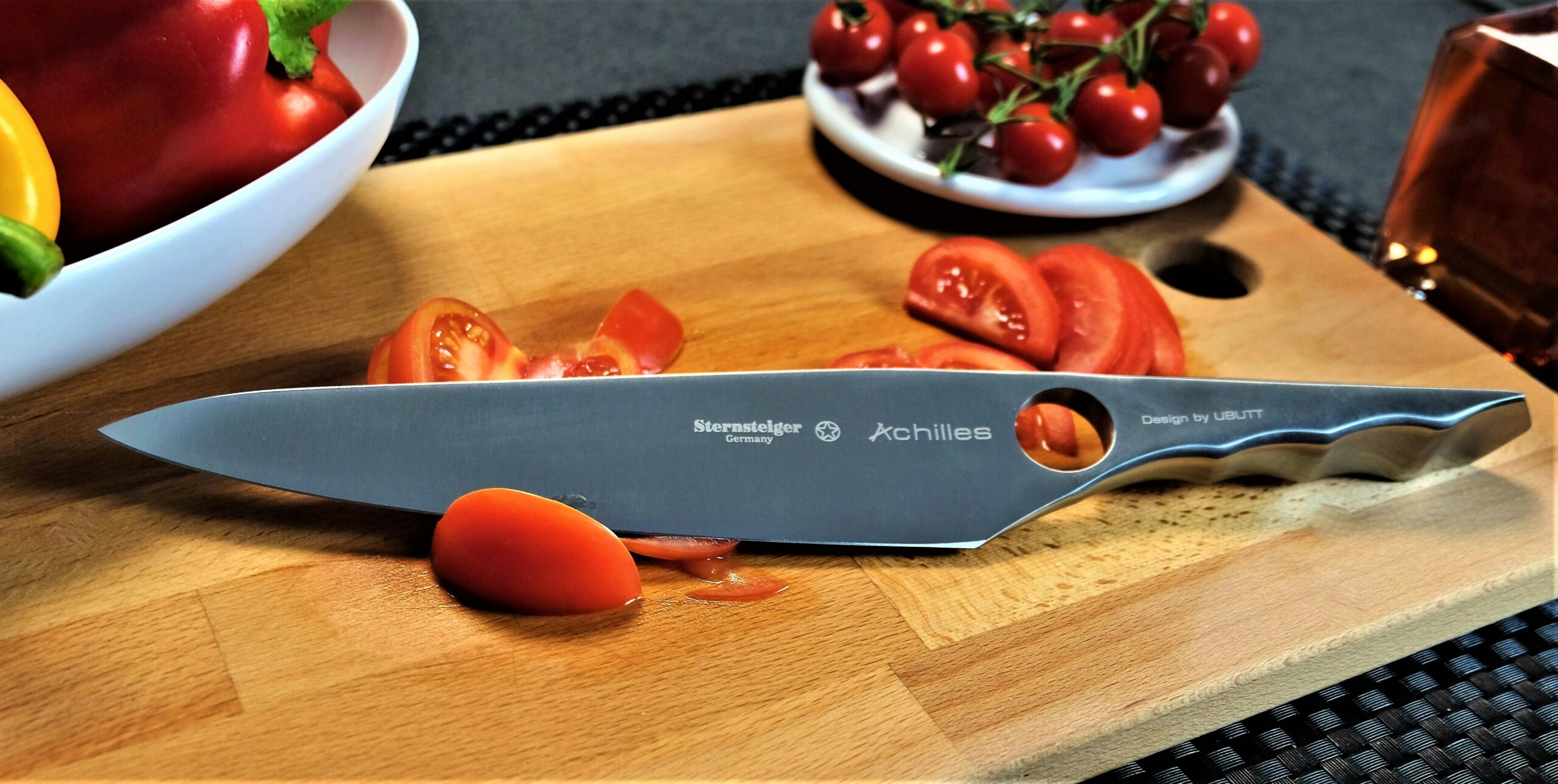When it comes to craftsmanship and durability, few names stand out like the iconic Sheffield knife. Have you ever wonder why Sheffield knives are considered the pinnacle of cutlery excellence? Originating from the historic city of Sheffield in England, these knives have been synonymous with superior quality and unmatched sharpness for centuries. Whether you’re a professional chef or a passionate home cook, owning a genuine Sheffield knife can completely transform your kitchen experience. What makes these knives so special compared to others in the market? The secret lies in the unique steel forging techniques and the meticulous attention to detail passed down through generations. Today, the demand for Sheffield kitchen knives and hand-forged Sheffield cutlery is skyrocketing, thanks to their reliability and timeless design. Are you looking for the perfect gift or upgrading your culinary tools? Discover how a Sheffield knife can elevate your food preparation with precision and style. From best Sheffield knives for chefs to affordable Sheffield pocket knives, this remarkable brand offers something for everyone. Curious to learn more about the fascinating history and modern innovations behind Sheffield knives? Dive deeper into this world-renowned craftsmanship and find out why it’s a must-have for any serious knife collector or cooking enthusiast.
Unveiling Sheffield Knife Craftsmanship: What Makes These Blades Britain’s Finest
Sheffield Knife: The Blade That’s More Than Just Sharp
When you hear the phrase Sheffield knife, you probably think about a simple kitchen tool. But oh no, it’s way more than that. Sheffield, a city in South Yorkshire, England, has been famous for its cutlery production for centuries, and knives from here are known the world over. Not sure why but there’s something about a Sheffield made blade that just feels… special. Maybe its the history, or maybe its just the quality, but people keeps coming back for more.
A quick glance into the history of Sheffield knives will tell you that these blades was not made overnight. The industry kicked off in the 14th century, and by the 19th century, Sheffield cutlery was exported globally. The city became synonymous with fine steel and sharp edges. If you want a knife that’s gonna last, a Sheffield kitchen knives set might just be what you’re looking for.
What Makes Sheffield Knives Stand Out?
| Feature | Description | Why It Matters |
|---|---|---|
| Steel Quality | High carbon steel or stainless steel | Sharpness and durability |
| Craftsmanship | Hand-forged and carefully finished | Unique and long-lasting blade |
| Design | Ergonomic handles and balanced weight | Comfortable and efficient to use |
| Heritage | Traditional making methods dating back centuries | Trust and reputation |
Honestly, not really sure why this matters, but the steel used in Sheffield knives is often regarded as one of the best in cutlery. They use a mix of high carbon and stainless steel; the carbon steel makes it super sharp but can rust if you ain’t careful, while stainless steel resists corrosion but might not keep the edge quite as long. It’s a bit like choosing between a sports car or a family wagon, both have their pros and cons.
Types of Sheffield Knives You’ll Find
Here’s a quick list of some popular types of Sheffield knives you might bump into:
- Chef’s knife: The all-rounder for chopping, slicing, and dicing.
- Paring knife: Small and handy for peeling or intricate work.
- Carving knife: Long and slender for slicing meat.
- Utility knife: A middle ground between paring and chef’s knives.
- Bread knife: Serrated blade perfect for crusty loaves.
Each of these have their own unique edge and handle design, catering to different kitchen needs. Maybe it’s just me, but I feel like the craftsmanship shines through even in the little details, like the weight distribution or the handle material.
Tips for Choosing Your Perfect Sheffield Knife
| Tip # | What to Look For | Why |
|---|---|---|
| 1 | Blade Material (Carbon vs Stainless) | Balance between sharpness and rust resistance |
| 2 | Handle Comfort and Grip | Prevents hand fatigue during use |
| 3 | Blade Length | Depends on what tasks you do most |
| 4 | Brand Reputation | Sheffield has some old, reputable makers |
| 5 | Price vs Quality | Don’t just buy cheap, you get what you pay for |
Honestly, picking a knife can be overwhelming. There’s tonnes of options out there and not every blade is created equal. If you’re looking for a Sheffield chef knife, you might want to focus more on the blade quality than flashy handles or colours. A good knife should feel like an extension of your hand, not a kitchen decoration.
Care and Maintenance for Sheffield Knives
You don’t want your expensive Sheffield knife to go dull or rusty, right? Here’s some practical advice you maybe want to follow:
- Always hand wash your knives; dishwashers are a no-no.
- Dry immediately after washing to avoid rust.
- Sharpen regularly using appropriate whetstones or sharpeners.
- Store properly in knife blocks or magnetic strips to protect edges.
- Avoid cutting on hard surfaces like glass or granite.
I know, I know, sounds like a lot of fuss just for a knife, but trust me, it’s worth it. A well-maintained Sheffield knives collection can last decades, maybe even generations.
Sheffield Knife Makers You Should Know About
| Maker Name | Specialty | Founded | Fun Fact |
|---|---|---|---|
| Joseph Rodgers & Sons | Traditional Sheffield cutlery | 1828 | One of the oldest cutlery makers |
| Ernest Wright | Handmade scissors and knives | 1902 | Only a handful of craftsmen left |
| Arthur Price | Luxury cutlery and gifts | 1902 | Royal warrant holders |
If you’re serious about your
Top 7 Reasons Sheffield Knives Outperform Other British Blades in Durability and Sharpness
Sheffield knife, oh where do I even start? If you ever been in the UK, you probably heard of Sheffield as the place where they makes some of the best knives in the world, but, honestly, it’s not just some random claim. This city has a history that goes back hundreds of years, and it’s been crafting Sheffield knife with a passion that’s almost contagious. You might ask, why Sheffield? Well, maybe it’s the water, or the steel, or just some magic in the air – who knows?
Anyway, to get a bit more into the nitty-gritty, Sheffield knives ain’t your everyday kitchen cutlery. They’re known for their durability and sharpness but also for the craftsmanship behind each piece. And here’s a funny thing: not many people realise that the city was once the global hub for cutlery production, producing millions of blades every year. That’s a lot of knives, if you ask me. But the thing that makes a Sheffield knife stand out isn’t just the quantity, it’s the quality and the tradition behind it.
Now, let me share a little table I put together about the types of Sheffield knives and their typical uses:
| Type of Sheffield Knife | Primary Use | Unique Feature |
|---|---|---|
| Chef’s Knife | General cooking tasks | Balanced weight, sharp edge |
| Paring Knife | Peeling and trimming | Small and easy to handle |
| Bread Knife | Slicing bread | Serrated edge |
| Carving Knife | Carving meat | Long, slender blade |
| Utility Knife | Multi-purpose kitchen tasks | Versatile and handy |
I know what you thinking, “Why does this table matter?” Well, for anyone who’s ever been lost in the kitchen, picking the right knife can be as confusing as trying to find a decent cuppa tea outside England. The Sheffield knife range offers something for everyone, which is quite handy.
One thing that blows my mind is the steel used in these knives. Sheffield’s steel was famous for being hard yet flexible. You see, if the steel is too hard, the blade might snap; if it’s too soft, it’ll get dull in no time. The blacksmiths in Sheffield figured out the perfect balance – which is why their knives last forever, or so they say (I mean, I’ve had mine for years and it’s still going strong). The manufacturing process is a bit of a mystery nowadays, probably because they don’t want everyone knowing their secrets. Makes you wonder what other tricks they’ve up their sleeves, eh?
If you’re thinking about buying a Sheffield knife, you might want to consider what you need it for. Here’s a quick rundown of what you might wanna look out for:
- Blade Material: Stainless steel or carbon steel? Stainless is low maintenance but carbon steel can be sharper.
- Handle Design: Wood, plastic, or composite? Comfort matters especially if you cook a lot.
- Knife Weight: Heavier knives give more power, lighter ones give more control.
- Price: Honestly, sometimes you pay for the brand, sometimes you pay for quality.
I’m not really sure why this matters, but apparently, some collectors are mad about vintage Sheffield knives. Like, they’ll pay hundreds of pounds for a knife that was made in the 1800s! I guess it’s like old wine or those fancy watches – it’s not just a knife, it’s a piece of history. Personally, I’d just wanna cut my vegetables without losing a finger, but to each their own.
Oh, and did I mention the Sheffield knife has been featured in movies and TV shows? Not the most important fact, sure, but it does add some street cred, doesn’t it? It’s like the knife equivalent of a celeb cameo. So next time you see a chef wielding a shiny blade on screen, it might just be a Sheffield.
Here’s a quick list of famous brands associated with Sheffield knife production:
- Robert Welch
- Arthur Price
- Burgon & Ball
- Sanderson
Each of these companies has their own style and specialty, but they all keep the Sheffield legacy alive. It’s kinda like a family tradition, passed down from generation to generation.
Now, if you’re wondering about maintenance, here’s some practical tips to keep your Sheffield knife in tip-top shape:
| Maintenance Task | How Often | Tips and Tricks |
|---|---|---|
| Sharpening | Every few months | Use whetstone or professional service |
| Cleaning | After every use | Hand wash and dry immediately |
| Storage | Always | Use a knife block or magnetic strip |
| Oil the handle (if |
How Sheffield’s Historic Steel Industry Shapes Today’s Premium Knife Quality
Sheffield Knife: More Than Just A Blade, Or So They Say
When you hear about a Sheffield knife, your mind probably go straight to sharp edges and shiny steel, but there’s a lot more to it than just that, if you ask me. Sheffield, a city in England, has been known for its cutlery for centuries, and the Sheffield knife history is a tale that might surprise you, or maybe just bore you, depends on how much you care about old factories and metalworks.
Why Sheffield? Well, it all started way back in the 14th century, but the real boom came in the 19th century when the Industrial Revolution was in full swing. The steel produced here was tougher and sharper than most, making it the go-to place for quality knives. I’m not really sure why this matters, but apparently, the secret lay in the specific way they mixed the steel and cooled it. Some folks say it’s the water they use from local streams or the coal from nearby mines, but honestly, might be just a legend.
Here’s a little table to give you an idea of what makes Sheffield knives stand out:
| Feature | Description | Why It Matters |
|---|---|---|
| Steel Quality | High-carbon steel, sometimes stainless | Gives durability and sharpness |
| Craftsmanship | Handmade or machine-assisted | Ensures precision and uniqueness |
| Design | Classic yet practical | Looks good and works well |
| Brand Legacy | Names like Joseph Rodgers & Sons | Trustworthy and historic |
Now, you might wonder, how do you actually identify a genuine Sheffield knife? Well, look for the stamping on the blade. Most real ones have the city’s name printed somewhere, often with the maker’s logo. But beware, there’s loads of knock-offs floating around, so don’t go just buying any old knife with “Sheffield” scribbled on it. It’s a bit like those “authentic” leather jackets you find in markets; sometimes it’s just a fancy word.
Talking about the practical side, using a Sheffield knife for kitchen tasks is quite a joy. They tend to hold their edge longer than many other knives, which means less sharpening, and who actually likes sharpening knives? Not me, that’s for sure. The balance is usually spot on, so cutting through meat or veggies feels natural, not like you’re wrestling with the thing. But I have to say, some of the cheaper Sheffield knives can feel a bit flimsy, like they’re made to look good but not last. So, maybe it’s just me, but I always check the handle material. Wood handles look classy but can get slippery, plastic might be boring but offers grip, and metal handles – well, they can get cold in winter, which ain’t great if you’re chopping slowly.
Here is a quick list of pros and cons about Sheffield knives:
Pros:
- Great sharpness and edge retention
- Rich history and reputation
- Variety in styles and uses
- Often well-balanced for comfort
Cons:
- Some cheaper models lack durability
- Handle materials vary in quality
- Not always easy to find authentic pieces
- Price can be steep for premium knives
If you ever visit Sheffield, don’t miss the chance to check out some cutlery shops or even the Sheffield knife museum, yes, there’s a museum dedicated to this! Not sure if you’ll find it thrilling, but it’s quite something seeing how knives evolved from simple blades to the sleek tools we use today.
Let’s talk a bit about maintenance, because you don’t want your fancy Sheffield knife to get rusted or dull after a few uses. Always hand wash them, avoid the dishwasher like plague, and dry them immediately. Oils on the blade help prevent rust, but I guess most people just forget and then complain when their knives look like they’ve been through a war. Sharpening should be done with a whetstone or a professional tool; those electric sharpeners might do more harm than good, at least according to some experts.
Now, let’s break down some common types of Sheffield knives you might come across:
| Type | Use Case | Typical Features |
|---|---|---|
| Chef’s Knife | General kitchen prep | Broad blade, balanced weight |
| Paring Knife | Peeling and intricate cuts | Small, sharp tip |
| Carving Knife | Slicing meats | Long, thin blade |
| Pocket Knife | Everyday carry | Foldable, compact |
Not to mention the collectors out there who treat Sheffield knives like treasures. They hunt for rare models, vintage designs, and even limited editions.
Discover the Secret Techniques Behind Sheffield Knife Manufacturing You Never Knew
Sheffield Knife: The Blade That’s Been Cutting Since Forever
When you think about Sheffield knife, you probably imagine some shiny, sharp thing made in good ol’ England, right? Yeah, that’s pretty much the gist of it but there’s so much more to these blades than just looks. Sheffield, a city in South Yorkshire, has been famous for its steel and knife making for hundreds of years now, and honestly, it’s hard to believe how much history is packed into these little cutting tools.
First off, you gotta understand why Sheffield knife are special. It’s not just about the steel—though the steel is bloody important. The thing is, Sheffield developed a reputation for producing high-quality cutlery by using innovative techniques that many others didn’t have. Back in the day, before mass production really took over, Sheffield’s knife makers were like craftsmen, putting care and skill into every blade. Maybe it’s just me, but I feel like that kind of dedication is rarer these days.
Did you know that Sheffield was once called “Steel City”? Not really sure why this matters, but it kinda gives you an idea about how central steel production was to the area. The knives made here were known for their durability and sharpness, which is why chefs, butchers, and even soldiers used them. Imagine carrying a Sheffield knife during the wars! Not the sort of thing you’d take lightly.
Here’s a quick table to show what makes a Sheffield knife different from others:
| Feature | Sheffield Knife | Other Knives |
|---|---|---|
| Steel Quality | High-grade carbon steel | Variable, often lower quality |
| Craftsmanship | Handmade & precision-forged | Mass-produced, less attention |
| Blade Sharpness | Extremely sharp and long-lasting | Dulls quicker |
| Historical Value | Rich heritage dating back centuries | Mostly modern designs |
| Price Range | Usually a bit pricier | Often cheaper |
You see, the combination of top-notch steel and skilled craftsmanship meant that these knife could last a lifetime. Though, I gotta admit, not all Sheffield knives are created equal. There’s cheap ones out there trying to cash in on the name — but if you want a proper cutlery, you should probably avoid those.
Now, I’m not saying you need to have a collection of Sheffield knives in your kitchen to be a good cook, but they sure do help. The sharpness of the blade means you can slice tomatoes like a pro, without squashing them. On the other hand, sometimes I wonder if all this fuss about having the “best” knife is just a bit of snobbery. Like, a good knife is a good knife, right? Well, not really, but you get my drift.
If you’re thinking about getting a Sheffield knife for yourself, here’s a practical insight for ya: always check what kind of steel the blade is made from. Carbon steel blades tend to be sharper, but they can rust if you’re not careful. Stainless steel blades are easier to maintain but might not hold an edge as well. So, it’s a bit of a trade-off depending on what you need it for.
Here’s a little pros and cons list to help:
Pros of Sheffield Knife:
- Long-lasting sharpness
- Beautiful craftsmanship
- Rich historical background
- Versatile uses (kitchen, outdoors, collectibles)
Cons of Sheffield Knife:
- Can be expensive (especially vintage or handmade)
- Some need more maintenance (carbon steel can rust)
- Fakes and low-quality knockoffs in the market
Honestly, the market for Sheffield knives have changed a lot in recent years. With the rise of cheap imports from places like China, the traditional Sheffield knife makers had to up their game or risk going bust. A few of the old family-run workshops still exist, but they’re becoming as rare as hen’s teeth. If you get a chance to buy one from a genuine Sheffield maker, grab it! It’s like owning a piece of history.
Something else that’s quite interesting is the variety of Sheffield knife styles. You’ve got your classic kitchen knives, of course, but also pocket knives, hunting knives, and even ornate collector’s knives. Each style has its own unique flair, but they all share that unmistakable Sheffield quality. Not really sure why this matters, but it’s kinda cool how one city managed to produce so many different types of blades.
Here’s a quick listing of popular Sheffield knife types:
- Chef’s knife
- Paring knife
- Pocket knife
- Hunting knife
- Carving knife
- Bread knife
And if you’re into collecting, some Sheffield knives have decorative handles made from bone, wood, or even ivory. They’re not just tools; they’re works of art.
In the end, whether you’re a chef,
Why Sheffield Knives Are the Ultimate Choice for Chefs and Collectors Across the UK
Sheffield knives, mate, are something of a legend in the world of cutlery, but I’m not really sure why this matters, but they’ve been around for centuries. You see, this little city in England, Sheffield, has been making knives since forever, and the quality is just something else. If you ever held a Sheffield knife in your hand, you’d probably feel like you can slice through anything, even your annoying neighbour’s complaints. Well, maybe not literally, but you get what I mean.
Now, the thing about Sheffield knives is that their steel is often praised. It’s not just any old metal, it’s a special blend that’s been kept secret for ages, or so they say. Some folks reckon the secret recipe got lost in time, but the knives still cut like butter, which is impressive. You probably wonder why steel matters, but the truth is without a good steel, your knife is just a blunt piece of metal, and who wants that?
Let’s have a quick look at what makes a Sheffield knife different from the rest:
| Feature | Sheffield Knife | Ordinary Knife |
|---|---|---|
| Steel Quality | High carbon stainless steel | Generic steel |
| Handle Material | Hardwood or composite | Plastic or low-grade wood |
| Blade Sharpness | Razor sharp, holds edge long | Dulls quickly |
| Craftsmanship | Hand-forged, traditional method | Mass-produced, machine-made |
Honestly, the craftsmanship is what really sets Sheffield knives apart, although some people might say it’s just a fancy marketing thing. But if you believe that, then maybe you’ve never tried to chop onions with a dull blade—trust me, it’s a nightmare.
I found out that Sheffield knives come in all shapes and sizes, from tiny paring knives to massive chef’s knives. They’re perfect for anyone who loves cooking, or just hates struggling with crappy knives. Maybe it’s just me, but I feel like having a proper knife makes cooking less of a chore, even if your skills are rubbish.
Here’s a quick list of popular Sheffield knife types you might want to consider:
- Paring knives: Small and great for peeling or trimming.
- Chef’s knives: The all-rounder for your kitchen needs.
- Bread knives: Serrated blades that tear through bread like a hot knife through butter.
- Carving knives: For slicing meats, especially useful at Christmas dinners.
Another thing, the handle of the knife is something people often overlook. Sheffield knives usually have ergonomic handles that fit nicely in your hand, which makes cutting safer and less tiring. Some handles even got fancy designs, which makes them look posh enough for your Instagram posts. Not that it’s important, but aesthetics do matter to some folks.
If you’re worried about maintenance, don’t be. Sheffield knives are pretty easy to look after, but you still need to sharpen them every now and then. Here’s a rough guide to keep your Sheffield knife in tip-top shape:
| Task | Frequency | Tips |
|---|---|---|
| Sharpening | Every 3-6 months | Use a whetstone or sharpening steel |
| Cleaning | After every use | Hand wash with warm soapy water, avoid dishwasher |
| Storage | Always | Use a knife block or magnetic strip |
By the way, putting your knives in the dishwasher is a big no-no. It will ruin the blade faster than you can say “sheffield knife.” I learnt this the hard way, so don’t be like me.
Oh, and you might be wondering if Sheffield knives are expensive. Well, they cost more than your average supermarket knife, but you get what you pay for, right? It’s like buying proper shoes instead of those cheap ones that fall apart after a week. Investing in a Sheffield knife is like investing in your cooking happiness, or at least that’s the story I’m telling myself.
One last thing—did you know that Sheffield was once called “Steel City”? It’s because the entire economy was based on steel production, including knives. So, owning a Sheffield knife is kinda like owning a piece of history, although you probably won’t impress your mates with that fact at the pub.
If you still not convinced, here’s a simple pro and cons table about getting a Sheffield knife:
| Pros | Cons |
|---|---|
| Long-lasting sharpness | Pricier than generic knives |
| Handmade quality and design | Requires regular maintenance |
| Heritage and craftsmanship | Might be too fancy for some kitchens |
| Comfortable handles | Some styles may not suit all users |
So yeah, if you’re after a knife that will actually last and won
Conclusion
In conclusion, Sheffield knives stand as a testament to centuries of exceptional craftsmanship and innovation. Renowned worldwide for their superior quality, durability, and sharpness, these knives have earned a prestigious reputation that continues to thrive today. From traditional forging techniques to modern manufacturing advancements, Sheffield has consistently upheld high standards, making its knives a favourite among chefs and collectors alike. Whether you are a professional cook seeking reliable kitchen tools or an enthusiast appreciating the rich heritage behind each blade, investing in a Sheffield knife promises both functionality and a piece of history. As the demand for quality cutlery grows, choosing a Sheffield knife not only supports skilled artisans but also ensures you enjoy precision and longevity in your culinary endeavours. Explore the diverse range of Sheffield knives and experience firsthand why they remain a benchmark of excellence in the world of cutlery.













